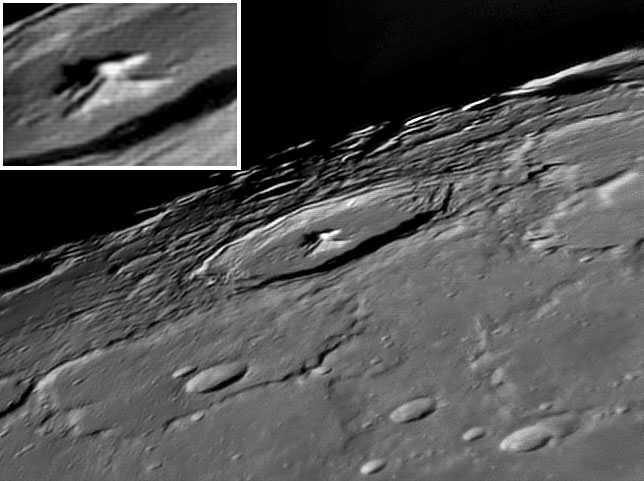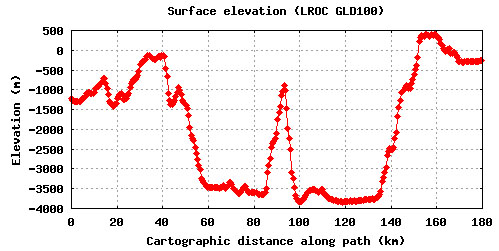Catching Up with Pythagoras
Originally published December 29, 2012


|
image by Javi Berna, Spain, and LRO QuickMap profile (below)
Pythagoras is a larger version of Copernicus - 130 km in diameter and about 5 km deep, compared to 93 km and 3.8 km. Surprisingly, it's tallest central peaks are higher than at least some of the surrounding terrain, violating seen at full Moon. Its greater age is also indicated by the lack of original surface roughness on impact melts to the north and perched on inner wall terraces, when examined with LRO images. In fact, the older age of Pythagoras was recognized during the Apollo era when it was mapped as about the same age as older Imbrium lavas. One thing the old timers didn't know is that the central peaks of Pythagoras, like those of nearby Anaxagoras, Philolaus and Carpenter, contain pure anorthosite, remnants of the magma ocean.
Chuck Wood
Related Links
Rükl plate 2
21st Century Atlas charts 20 & L7.
Javi Berna's website
An earlier, more profile-like view of Pythagoras.
Yesterday's LPOD: Missing Rays
Tomorrow's LPOD: Lost Inspirations
Register, Log in,
and join in the comments.
|





